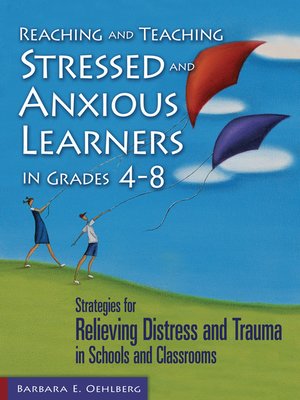Reaching and Teaching Stressed and Anxious Learners in Grades 4-8
ebook ∣ Strategies for Relieving Distress and Trauma in Schools and Classrooms
By Barbara E. Oehlberg

Sign up to save your library
With an OverDrive account, you can save your favorite libraries for at-a-glance information about availability. Find out more about OverDrive accounts.
Find this title in Libby, the library reading app by OverDrive.



Search for a digital library with this title
Title found at these libraries:
| Library Name | Distance |
|---|---|
| Loading... |
" Offers those of us who interact with students an opportunity to respond with sensitivity and reflective action. Barbara Oehlberg not only identifies the issues, but also provides activities that can help us gain greater insight into the child′s world and provide opportunities for empowerment and healing."
-Susan Ross, Coordinator of Health Services
Canton City Schools, OH
"With the wisdom in this important work, we can help our children develop new strategies for successful living in a stressful world."
-Stephen Canneto, Director
Art for a Child′s Safe America Foundation
"Links sound neurological research with practical activities for educators and youth workers."
-Martha de Acosta, Director
Education and Training Programs
Milton S. Eisenhower Foundation
From trauma, stress, and hopelessness to safety, challenge, and optimism!
Not all children cope equally well with the stresses and traumas life throws their way, and every educator recognizes that "deer in the headlights" look some children get when current events and past traumas combine to trigger a fight-or-flight stress response. No matter how safe the classroom may be in reality, trauma deactivates cognitive skills, and learning cannot resume until the child′s equilibrium has been restored.
This important new resource helps educators understand how trauma and stress interfere with cognitive skills, and how classroom and school activities can be used to restore feelings of safety, empowerment, and well-being. Topics include:
Teachers, counselors, principals, and administrators will find that these innovative strategies enhance feelings of safety and optimism in all learning environments and programs, transforming hopelessness and anxiety into resiliency and hope.







